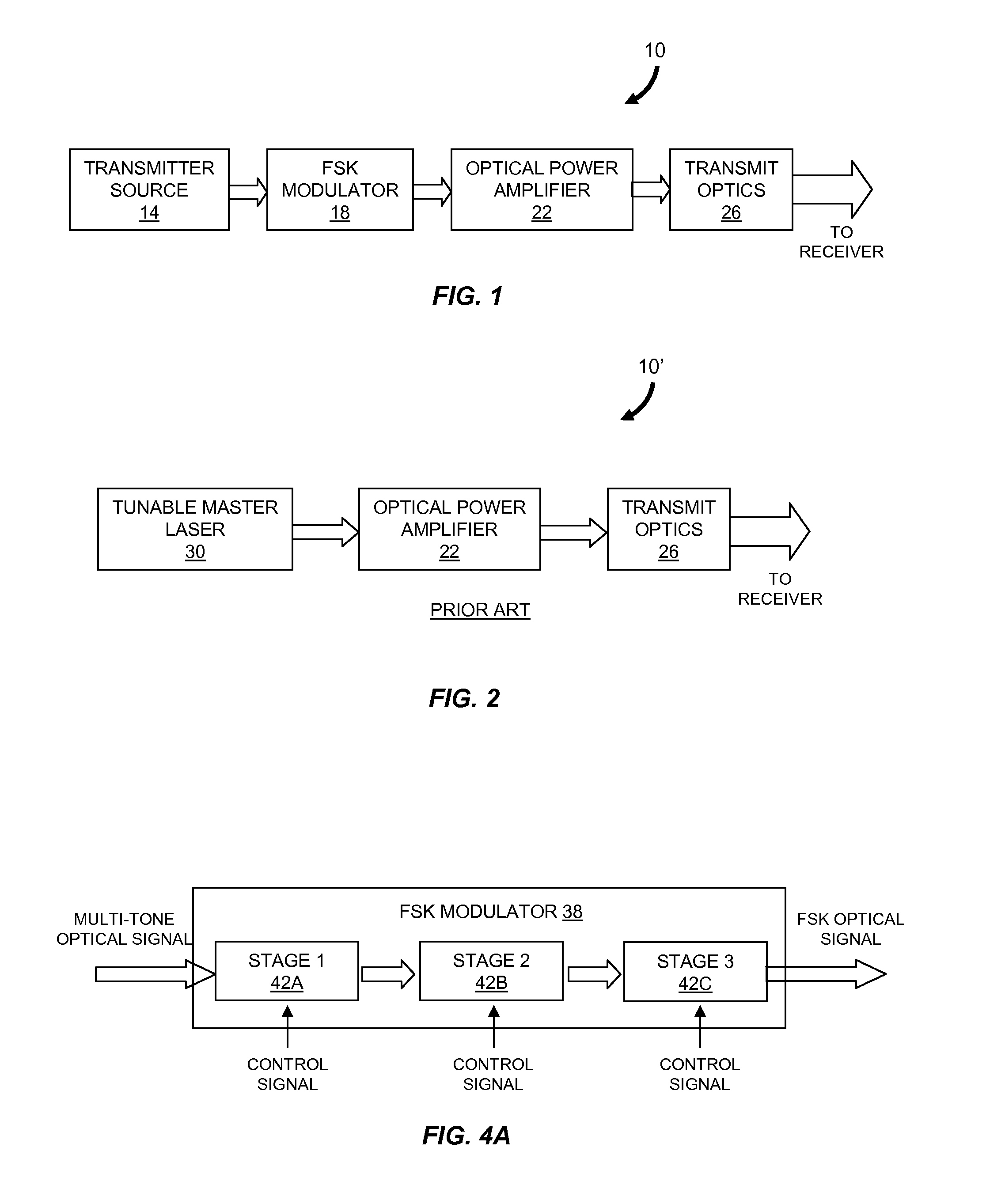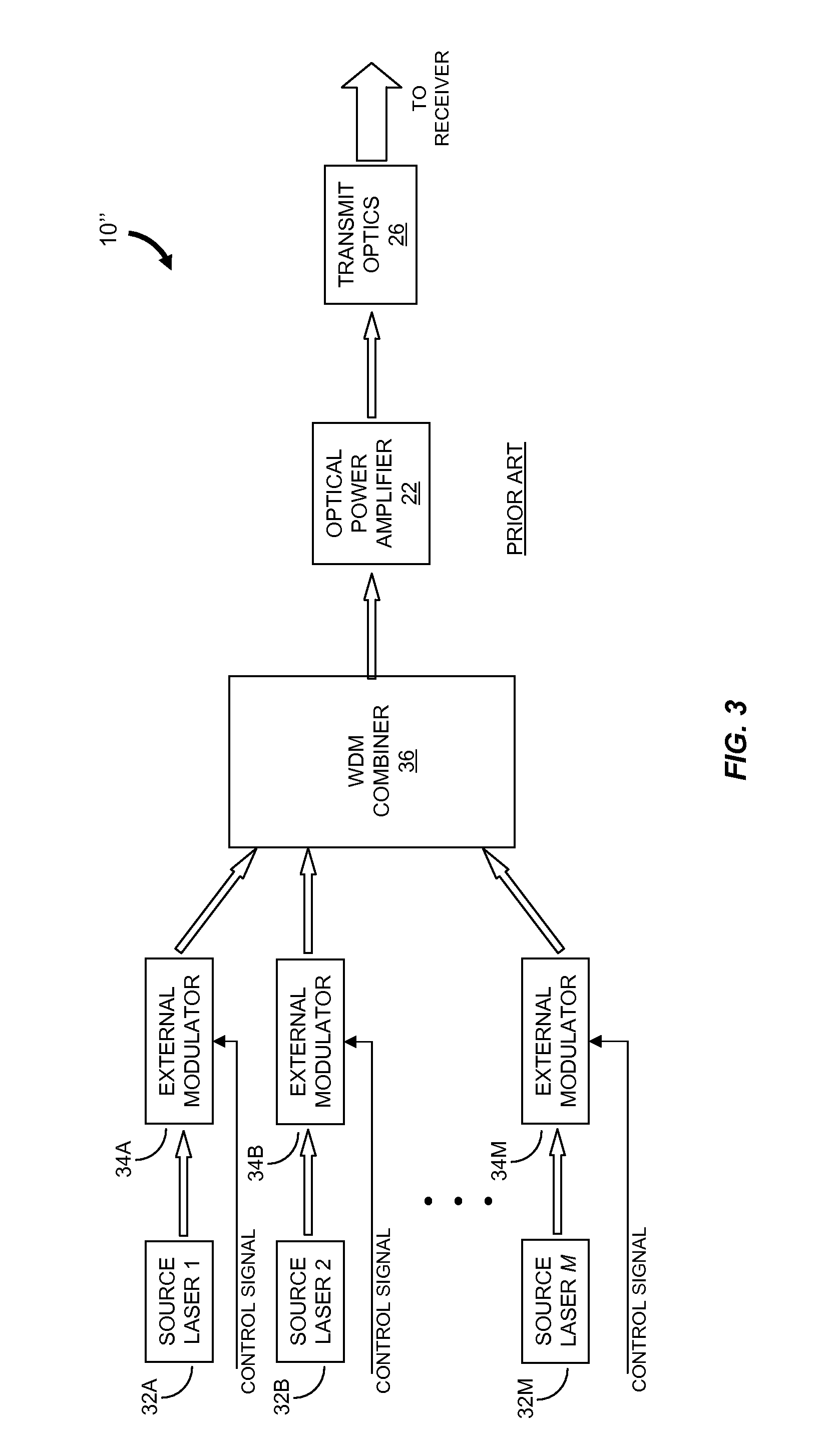Modulator for frequency-shift keying of optical signals
a modulator and optical signal technology, applied in the field of optical communication based on frequencyshift keying (fsk), can solve the problem of impracticality for a large number of source lasers, the complexity of the transmitter,
- Summary
- Abstract
- Description
- Claims
- Application Information
AI Technical Summary
Benefits of technology
Problems solved by technology
Method used
Image
Examples
Embodiment Construction
[0032]In brief overview, the invention relates to an FSK modulator and a method for large-alphabet (i.e., many different transmission frequencies) FSK modulation at high symbol rates (e.g., greater than 40 GHz). The method is based on filtering of a multi-tone optical source such as a mode-locked laser which provides a comb distribution of tones. A frequency-selective component selects for transmission a subset of the tones (e.g., “alternate” tones) in the comb distribution. A second frequency-selective component selects a subset of the tones from the comb distribution provided by the first frequency-selective component. Still more frequency-selective components can be used according to the number of tones supplied by the multi-tone optical source to the FSK modulator. The optical signal exiting the last frequency-selective component of the FSK modulator includes only a single tone which corresponds to the symbol to be transmitted. In one embodiment the frequency-selective component...
PUM
 Login to View More
Login to View More Abstract
Description
Claims
Application Information
 Login to View More
Login to View More - R&D
- Intellectual Property
- Life Sciences
- Materials
- Tech Scout
- Unparalleled Data Quality
- Higher Quality Content
- 60% Fewer Hallucinations
Browse by: Latest US Patents, China's latest patents, Technical Efficacy Thesaurus, Application Domain, Technology Topic, Popular Technical Reports.
© 2025 PatSnap. All rights reserved.Legal|Privacy policy|Modern Slavery Act Transparency Statement|Sitemap|About US| Contact US: help@patsnap.com



